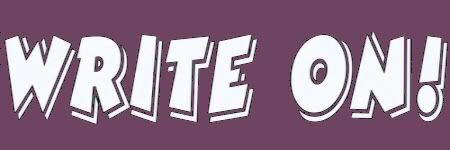
Thursday, February 23, 2006 The Seven Part Synopsis A writer friend was recently complaining about how she hated to write synopses. I used to feel the same way, but now I find them incredibly simple. The difference is my discovery of the seven-part synopsis. Using the seven-part synopsis, I can outline the rough skeleton of a story -- the main characters, the conflict, the character arcs, and the resolution -- in no time flat, and see if it's strong enough to support a novel or novella. If it's not, now is the time to do more research, and beef up the sagging components. Then, when I go to write the story, I know it's going to work. The seven-part synopsis starts with characters, because I'm a very character-oriented writer. Part 1 is devoted to the heroine. Who is she? What is her background? How did she get where she is? What does she want out of life? Think of this as putting a stake in the ground, marking off that at the beginning of the story, *this* is who/what/where the heroine is. Part 2 will be another stake in the ground, but this one for the hero. Who/what/where is he when the story opens? Now, you tie strings around those two stakes, and twist the strings together. In other words, how do these two people meet and get involved with each other? This becomes Part 3, otherwise known as the Inciting Incident. This incident sends them each spinning off in a different direction. Parts 4 and 5 detail each character's attempts to deal with the inciting incident, as well as all the escalating problems incurred by those attempts. Part 6 occurs when the characters realize their independent strategies for dealing with the problem are not working, and that they must unite in some way to resolve it. It describes how they come to work together, as well as what they do. Part 7 is the resolution, where we see their success, as well as how their unification has changed them from where they were in parts 1 and 2. See? Easy! -- Jennifer
Monday, February 20, 2006 I do experiment with some of the techniques suggested in some of the books. I'm always looking for new ways to improve my writing. But I'm realistic. Not everything in those books will work for me. An example, plotting an entire book before even beginning the first chapter--that doesn't work for me. I've tried it. I can see the advantages in plotting a book fully down to the last subplot. The lovely middle of the book "Okay, I'm stuck" thing that sometimes happens to me just might be avoided. The story and characters just don't come to me that way. I love letting the characters loose to do their worst--or best, depending on what they're trying to do. Trying to force myself to write that way just frustrates me and kills the enthusiasm for the story. I've never gotten past chapter three with that method. Write, have fun, go with what works, but never be afraid to try a technique or method. Even if you don't find all of it useful, you might find some small bit of it that will make writing easier or sharpen your skills. PS: Just a bit of advice. Never experiment while the ideas are flowing. The wonderful scenes just faded and I couldn't get them back. Hopefully, you don't have this trouble. It's taken me three days to get back on track.
|












